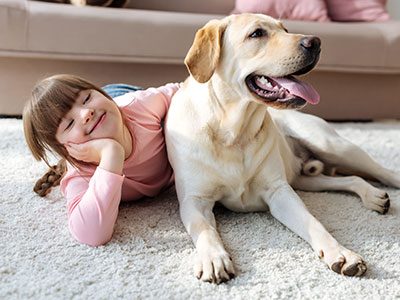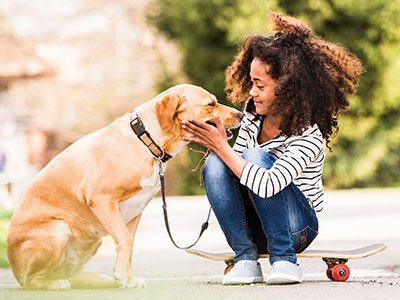According to the American Pet Products Association, 48 percent of American households have a dog and 38 percent have a cat. Many others have a variety of other pets including fish, rodents and reptiles. Having pets is a fabulous way to help children learn the value of caring for another creature and find joy in the unconditional love pets can provide.
When our oldest was born, we had two cats. One is very relaxed and we had no concerns about her behavior with the baby. The other had a history of some aggression and anxiety and we knew she would be jealous of a new baby. We were concerned before we brought our daughter home.
Our first step was to talk to our trusted veterinarian about preparing the cats for our baby.
Preparing pets for baby
- Meet with your veterinarian. Ours prescribed an antidepressant for our cat which did indeed help calm her anxiety.
- Allow the pet to inspect many of the baby items prior to the baby coming home.
- Bring home a blanket or item from the hospital with the baby’s scent on it so that the pet can get used to it before the baby comes home.
- This one is hard, but try to find ways to make clear to your pet which are pet toys and which are baby toys.
- Make a “safe space” for the animal in your home, if possible, where they can go without the child being able to follow.
As your child grows up, their relationship with the pet will change. Neither of our cats minded the girls when they were babies because they were not threatening. However, they became nervous when both girls discovered them and squealed with delight every time they saw the cat. Then, when they started wanting to pet the cats, we had to work hard to teach them to be gentle.
Helping kids handle pets with care
- Always supervise children closely when they are with an animal.
- Demonstrate gentle touches and praise for appropriate behavior.
- Remove the child from the animal if the child gets rough or if the animal is clearly distressed.
- Teach your child never to approach an unknown animal and always to ask first before touching.
If your child has a fear of animals, some strategies include:
- Use books and stories to decrease fear and increase familiarity.
- Allow your child to observe animals from a safe distance.
- Allow your child to observe you or others interacting safely with animals.
- Help your child get more comfortable with increasing levels of conflict without ever forcing them.
- If your child has extreme fear or their fear is impacting their ability to function in everyday activities, consider taking them to a psychologist who specializes in treating phobias in children.
Our daughters adore our cat and she tolerates them well. They find joy in petting her, getting her food and talking to her. Animals are used every day in therapy for children and provide a wonderful stress relief. Helping your child feel comfortable with and gain the skills to interact with pets is a life-long gift.
 https://riseandshine.childrensnational.org/wp-content/uploads/2019/05/girl-lying-on-the-floor-with-her-dog-feature.jpg
300
400
Rise and Shine
https://riseandshine.childrensnational.org/wp-content/uploads/2017/11/childrens_riseandshine_logo.jpg
Rise and Shine2019-05-30 11:03:372019-07-16 11:20:18Kids and pets
https://riseandshine.childrensnational.org/wp-content/uploads/2019/05/girl-lying-on-the-floor-with-her-dog-feature.jpg
300
400
Rise and Shine
https://riseandshine.childrensnational.org/wp-content/uploads/2017/11/childrens_riseandshine_logo.jpg
Rise and Shine2019-05-30 11:03:372019-07-16 11:20:18Kids and pets




Leave a Comment
Want to join the discussion?Feel free to contribute!